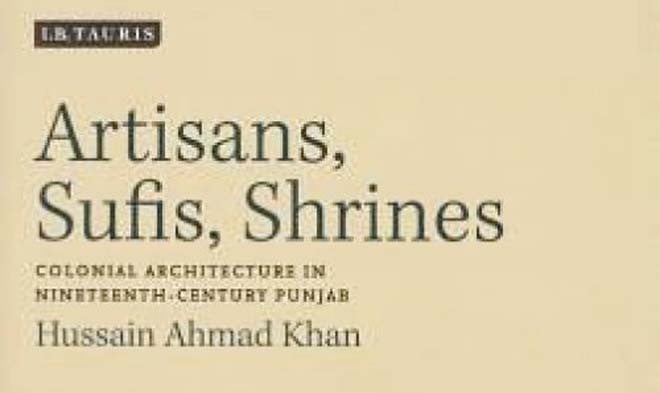
An important book about the social and cultural history during the colonial times, especially with reference to the Punjab

It is rarely that one rarely comes across an academic who shows utmost commitment and sincerity to his research endeavours. We don’t have many genuine scholars in our universities and that is the main reason behind our dismal academic output. Stifling conditions prevailing at our universities force the few scholars that we have to leave the country and settle in the West to fulfill their research pursuits.
Hussain Ahmad Khan completed his PhD from the National University of Singapore, came back to Pakistan and is now an assistant professor in the Department of Humanities at COMSATS Institute of Information Technology Lahore. He has taught history at Government College University Lahore for quite some time under the visionary Dr Tahir Kamran before he went to Singapore for his PhD. The book Artisans, Sufis and Shrines: Colonial Architecture in Nineteenth-Century Punjab is a product of many years of hard work and toil of his PhD years. It is likely to be welcomed by all academics as well as students of history for the indepth analyses supported by mammoth references.
The book sheds light on the various initiatives by the colonial state to introduce and establish art institutions with the collaboration of locals in Punjab. However, their efforts to influence and even change local art and architecture backfired as they were not supported by common religious experiences, cultural traits etc. Instead, the local artisans were more drawn towards the sufis who engaged them for their khanqahs and other rituals like melas, urs etc.
The learned author suggests that a close relationship existed between the sufis and the local artisans even if you scan the rich folktales of Punjab. Artisans thought that the closeness with the sufis would bring them ‘baraka’ (blessings) so they were naturally drawn to their khanqahs.
Hussain Ahmad Khan focuses on the 19th century when the Chishti order of the sufis dominated the region. They used to build their khanqahs as well as shrines. Their view of religion was different compared to the other sufis. ‘They favored the establishment of an Islamic state where religion should be practised; some of them participated in Jihad against Sikhs and the British; others supported the Muslim rulers in the struggle to retain their political authority and some of them even helped the British against Sikhs to get rid of latter as they targeted mosques and shrines’.
Festivals and architecture were important tools to distinguish the Muslims from other communities. On the other hand, the British officials combined the architectural elements from different traditions in order to represent a liberal empire comprising varying ethnic and religious communities. This attempt failed miserably as it didn’t fit in any one tradition. This eclectic architecture had to be abandoned in the early 20th century as it didn’t serve the purpose.
Likewise, the local artisans didn’t take warmly to the exhibitions which the British introduced as they wanted to meet the global market demands. The author is of the view that the Punjabi artisans were suspicious of these exhibitions and they believed that the colonial state would impose more taxes after collecting the exhibits and may share their trade secrets with the European manufacturers. Institutions like the Mayo School of Art could not achieve the main target due to the lukewarm response of the local workers. Lahore Museum too failed to educate the locals about their craft and cultural history. So they had to engage the local artisans in these institutions.
The author argues quite convincingly that political domination is supposed to usher in domination in the areas of art and architecture. He says it may not be the case always as sometimes the local people resist unwittingly in their own way. He adds, ‘Historians normally consider political domination as a means to control art and architecture. The case of Punjab is different. Neither the artisans nor sufis had political power but they attempted to dominate the local culture and promoted different identities. The locals never subordinated to the institutional practices’.
The four chapters in the book are a real treat to read as they offer you a brilliant analysis of a young historian who has complete command over his subject. The book should be a must read for all those who are interested in the colonial history and its various aspects with special reference to the Punjab.